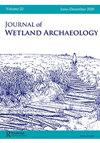Assessing the Results of the 2006 and 2007 Investigations at Sunken Village Wet Site
Q1 Arts and Humanities
引用次数: 2
Abstract
The Sunken Village site is situated in a major flood plain basin, at the confluence of the Willamette and Columbia rivers – a geographical position that made it highly attractive as a cross-roads for ancient and current human occupation – known as a trade center supporting large populations for millennia. Major paleoenvironmental events formed the current Portland Basin, including Holocene floods 13–15,000 year ago, scouring the Columbia River channels from massive releases of glacial ice dams in Missoula, Montana, U.S.A., and more recently, a directly upriver release of the massive Bonneville Landslide floods through the Portland Basin region approximately 700 years ago. This last, and no doubt catastrophic event for the ancient Multnomah Peoples, probably sheared and/or buried earlier sites throughout the Portland Basin, and may account for the earliest dates of approximately 700 years BP for the Sunken Village site. The site is located on the Multnomah Channel/Slough which may have once been a main channel of the Willamette River as it flowed northward into the Columbia River, but currently the main Willamette River discharge moves northeastward into the Columbia River, forming Sauvie Island. The Multnomah Channel/Slough forms the west side of the island (see Figures 2.2 and 3.6). As a slough the channel has limited current flow, explaining the fine silt clay matrix of the Sunken Village beach, and its flow is influenced by the tidal action (though it is fresh water at this location). The site is on the outer convex curved edge of the channel point bar, therefore the depositional side, contributing to a slow build up of the original point bar levee at this location (see Figure 2.2). Therefore the beach deposits were progressively accreting out, with organic debris mats being deposited, along with the discarded cultural debris, in vegetal layers along the lee slope of the ancient bar, as revealed in TU4 excavations and deep-cores 5 and 6 at the site (see Punke, above). Two paleoenvironmental conditions no doubt contributed to the ideal conditions at the Sunken Village location for its primary use as an acorn leaching pit station: (a) the non-aggressive currents of this protected slough, forming dense silt/clay point bar deposits for secure construction of hemlock bough-lined pits for the acorn harvest, and, more importantly, (b) the shallow aquifer flow from the island under the natural levee and surfacing along this section of the point bar, creating the underground water flow needed to affectively leach the potentially millions of acorns processed at this prime location. Journal of Wetland Archaeology 9, 2009, 185–201评估2006及2007年在沉村湿地进行的调查结果
沉没村遗址位于一个主要的洪泛平原盆地,位于威拉米特河和哥伦比亚河的交汇处,这一地理位置使其成为古代和现代人类居住的十字路口,作为一个几千年来支持大量人口的贸易中心而闻名。主要的古环境事件形成了现在的波特兰盆地,包括13 - 1.5万年前的全新世洪水,美国蒙大拿州密苏拉冰川冰坝的大规模释放冲刷了哥伦比亚河的河道,以及最近大约700年前直接上游释放的大规模博纳维尔滑坡洪水,穿过波特兰盆地地区。这最后的,毫无疑问是古穆尔特诺玛人的灾难性事件,可能剪切和/或掩埋了整个波特兰盆地的早期遗址,并且可能解释了沉没村遗址的最早日期约为700年前。该基地位于Multnomah海峡/Slough上,这可能曾经是威拉米特河的主要通道,因为它向北流入哥伦比亚河,但目前威拉米特河的主要流量向东北流入哥伦比亚河,形成了Sauvie岛。摩特诺玛海峡/泥沼形成了岛的西侧(见图2.2和3.6)。作为一个泥沼,河道的水流有限,解释了沉没村海滩的细淤泥粘土基质,其流量受到潮汐作用的影响(尽管在这个位置是淡水)。该地点位于河道点坝的外凸弯曲边缘,因此是沉积侧,这有助于在该位置缓慢建立原始点坝堤防(见图2.2)。因此,海滩沉积物逐渐向外堆积,有机碎屑席和废弃的文化碎屑一起沉积在古沙洲背风坡的植被层中,这一点在TU4的挖掘和该地点的深岩心5和6中得到了揭示(见上文的Punke)。两个古环境条件无疑促成了沉村位置的理想条件,使其主要用作橡子浸出坑站:(a)这个受保护的泥滩的非侵略性水流,形成了密集的淤泥/粘土点坝沉积物,为收获橡子提供了安全的铁杉树枝衬里的坑,更重要的是,(b)从天然堤坝下的岛屿流出的浅层含水层,沿着点坝的这部分地表,创造了有效浸出在这个黄金位置加工的潜在数百万橡子所需的地下水流。湿地考古学报,2009,185-201
本文章由计算机程序翻译,如有差异,请以英文原文为准。
求助全文
约1分钟内获得全文
求助全文
来源期刊

Journal of Wetland Archaeology
Arts and Humanities-Archeology (arts and humanities)
CiteScore
1.40
自引率
0.00%
发文量
6
期刊介绍:
The Journal of Wetland Archaeology publishes a wide range of contributions in all fields of wetland archaeology. It includes scientific and methodological features, geoprospection, environmental reconstruction, wetland hydrology, cultural aspects of wetland archaeology, as well as conservation, site management, legislation, and site protection. All periods and all geographic regions are covered.
 求助内容:
求助内容: 应助结果提醒方式:
应助结果提醒方式:


